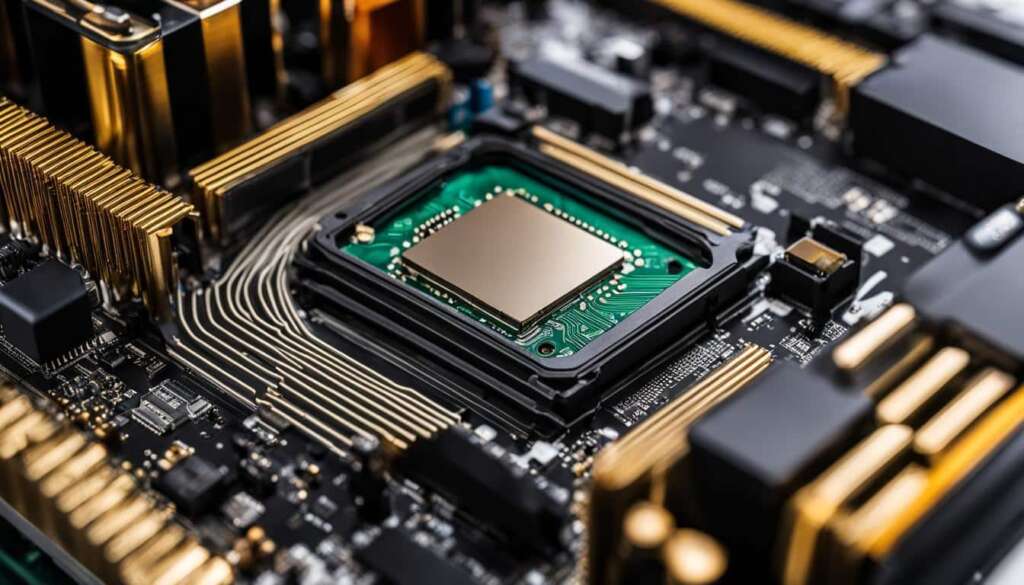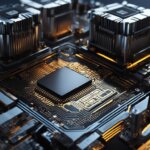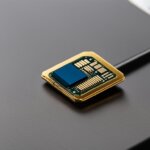Table of Contents
A motherboard, sometimes called a mainboard, is the central printed circuit board (PCB) in a computing system. It connects all the components, including the CPU, memory, hard drive, and video card, allowing them to communicate with each other. Without a motherboard, a computer system would not function.
The role and importance of a motherboard in computing cannot be overstated. It’s the core component that enables everything else to work seamlessly. Understanding the functions and components of a motherboard is critical for anyone who wants to build, upgrade or repair a computer system.
Key Takeaways
- A motherboard is the central printed circuit board in a computing system that connects all components together.
- The motherboard is a core component that enables everything else to work seamlessly in a computer system.
- Understanding the role and importance of a motherboard is critical when building, upgrading or repairing a computer.
- Components including CPU socket, RAM slots, expansion slots, and ports are key parts of a motherboard.
- A motherboard acts as a central hub, connecting different components, providing power and facilitating data transfer.
The Role and Functions of a Motherboard
A motherboard is the backbone of a computing system, connecting all the different parts together and allowing them to communicate with each other. It acts as a central hub that facilitates the smooth functioning of your PC. In this section, we will explore the various functions and components of a motherboard that make it such an essential component of your computer.
The Functions of a Motherboard
A motherboard performs a range of critical functions that ensure that your computer operates efficiently. It provides power and regulates the distribution of power to the different components of your system. Additionally, it provides a means of communication between various devices such as the CPU, RAM, hard drives, and other peripherals connected to it, facilitating data transfer and processing. A motherboard also supports expansion options through its expansion slots, allowing for the addition of new components and upgrades to your system in the future.
The Components of a Motherboard
A motherboard consists of several critical components that are essential for its functioning. These components include the CPU socket, which houses the processor and is responsible for processing instructions. The RAM slots, where memory modules are inserted, are responsible for storing temporary data that your computer needs to access regularly. Expansion slots allow the installation of additional hardware such as graphics cards, sound cards, and storage devices, thereby expanding the capabilities of your system. The motherboard also has several ports for connecting peripherals such as USB devices, Ethernet cables, audio devices, and more.
Overall, the role and functions of a motherboard are critical for the efficient functioning of your computer. By choosing a motherboard that fits your needs and has the necessary components and functions, you can ensure a smooth and robust computing experience.
Exploring Motherboard Components
A motherboard is made up of various crucial components that ensure its proper functionality. In this section, we will delve deeper into these components, their purpose and significance.
CPU Socket
The CPU socket, also known as the processor socket, is designed to house the computer’s central processing unit (CPU). The CPU is considered the brain of a computer system, and it is responsible for processing instructions and carrying out tasks. There are various types of CPU sockets available, including Intel and AMD sockets, and it is important to check compatibility when selecting a motherboard.
RAM Slots
The Random Access Memory (RAM) of a computer system is installed in the motherboard’s RAM slots. The RAM modules store frequently accessed data and provide fast, temporary access to information. The number of RAM slots on a motherboard varies, and they are designed to support different types of RAM, including DDR4, DDR3, and DDR2.
Expansion Slots
Expansion slots are designed to add additional hardware components to a computer system, such as graphics cards, sound cards, and network interface cards. The expansion slots are available in different configurations, including PCI, PCIe, and AGP. These slots allow the user to tailor their computing system to meet their specific needs and requirements.
Ports
The motherboard also features various ports that allow external devices to be connected to the computer system. These include USB ports, Ethernet ports, HDMI ports, and audio jacks, among others. The number and type of ports available on a motherboard depend on the motherboard model.
Conclusion
To sum up, a motherboard is a crucial component that serves as the backbone of a computer system. It plays a vital role in connecting all the different parts of a PC and facilitating their communication. Without a motherboard, it would be impossible for a computer to function.
Through the preceding sections, we have explored the key functions and components of a motherboard. We have looked at the various ports, expansion slots, RAM slots, and CPU sockets that make up this essential component.
By understanding the importance of the motherboard, users can make informed choices when selecting or upgrading their computer systems. They can choose a motherboard that meets their system requirements and supports the expansion capabilities they need.
So, whether you are a gamer, a professional, or a casual user, it is essential to recognise the vital role played by the motherboard in your computer system. With this knowledge, you can make more informed decisions about your computer system’s performance, reliability, and longevity.
FAQ
What is a motherboard?
A motherboard is a core component of a computer system that serves as a central hub, connecting various hardware components and allowing them to communicate with each other.
What is the role of a motherboard in computing systems?
The motherboard plays a crucial role in a computer system as it provides power to the components, facilitates data transfer between them, and supports expansion options through its expansion slots.
What are the functions performed by a motherboard?
The functions performed by a motherboard include regulating power supply to the components, managing data transfer between the processor, memory, and other peripherals, facilitating audio and video output, and supporting expansion options through its expansion slots.
What are the components of a motherboard?
The components of a motherboard include the CPU socket, where the processor is installed, RAM slots for memory modules, expansion slots for additional hardware, and various ports for connecting peripherals such as USB devices, monitors, and network cables.
How important is a motherboard in a computer system?
A motherboard is a vital component of a computer system as it serves as the central nervous system, connecting and coordinating the different parts of the computer. Without a functioning motherboard, the computer cannot operate properly.












